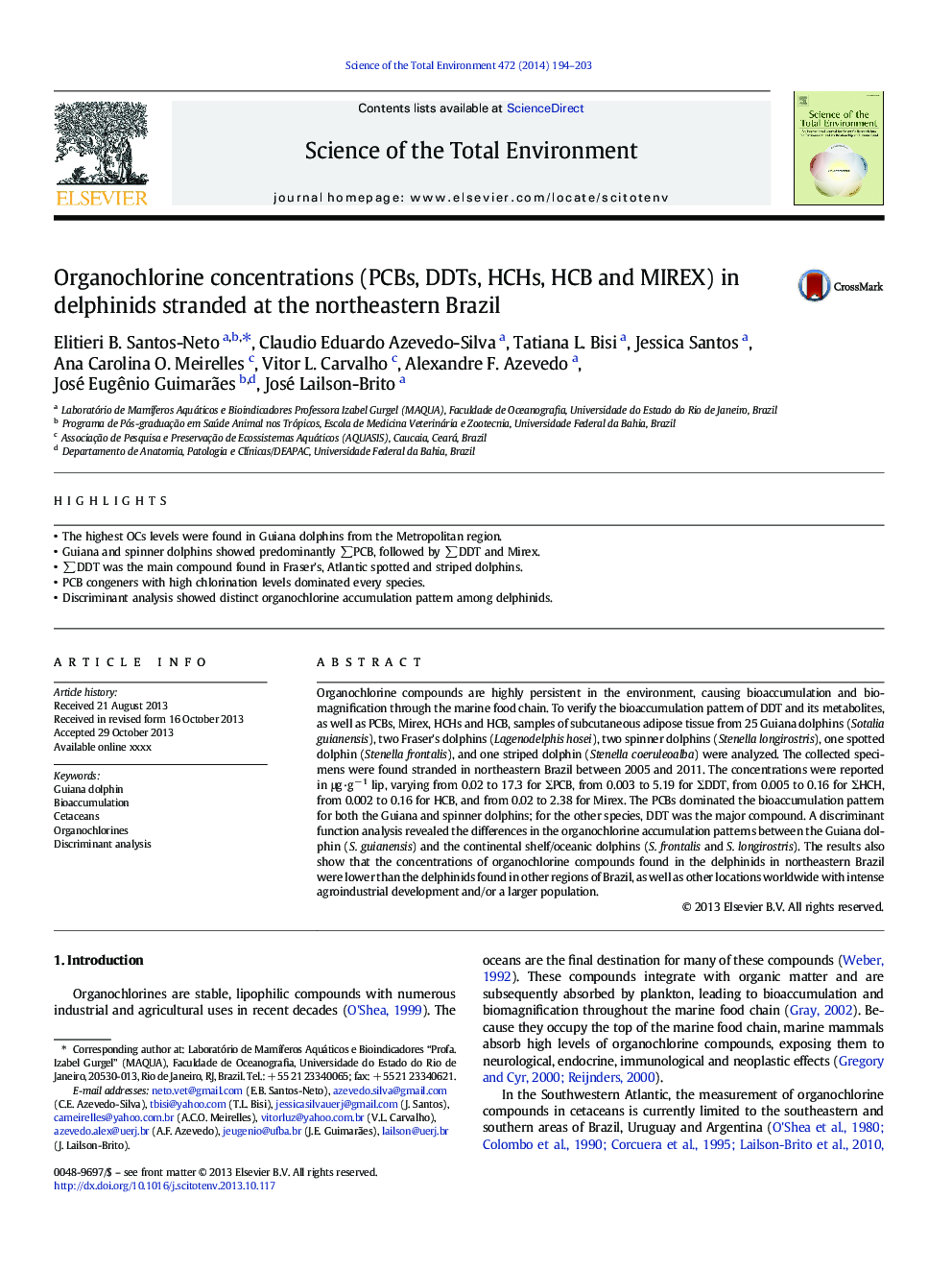| Article ID | Journal | Published Year | Pages | File Type |
|---|---|---|---|---|
| 6331095 | Science of The Total Environment | 2014 | 10 Pages |
Abstract
Organochlorine compounds are highly persistent in the environment, causing bioaccumulation and biomagnification through the marine food chain. To verify the bioaccumulation pattern of DDT and its metabolites, as well as PCBs, Mirex, HCHs and HCB, samples of subcutaneous adipose tissue from 25 Guiana dolphins (Sotalia guianensis), two Fraser's dolphins (Lagenodelphis hosei), two spinner dolphins (Stenella longirostris), one spotted dolphin (Stenella frontalis), and one striped dolphin (Stenella coeruleoalba) were analyzed. The collected specimens were found stranded in northeastern Brazil between 2005 and 2011. The concentrations were reported in μg·gâ 1 lip, varying from 0.02 to 17.3 for ΣPCB, from 0.003 to 5.19 for ΣDDT, from 0.005 to 0.16 for ΣHCH, from 0.002 to 0.16 for HCB, and from 0.02 to 2.38 for Mirex. The PCBs dominated the bioaccumulation pattern for both the Guiana and spinner dolphins; for the other species, DDT was the major compound. A discriminant function analysis revealed the differences in the organochlorine accumulation patterns between the Guiana dolphin (S. guianensis) and the continental shelf/oceanic dolphins (S. frontalis and S. longirostris). The results also show that the concentrations of organochlorine compounds found in the delphinids in northeastern Brazil were lower than the delphinids found in other regions of Brazil, as well as other locations worldwide with intense agroindustrial development and/or a larger population.
Related Topics
Life Sciences
Environmental Science
Environmental Chemistry
Authors
Elitieri B. Santos-Neto, Claudio Eduardo Azevedo-Silva, Tatiana L. Bisi, Jessica Santos, Ana Carolina O. Meirelles, Vitor L. Carvalho, Alexandre F. Azevedo, José Eugênio Guimarães, José Lailson-Brito,
